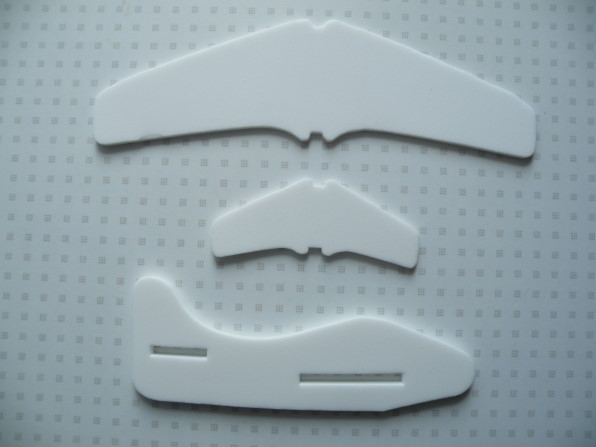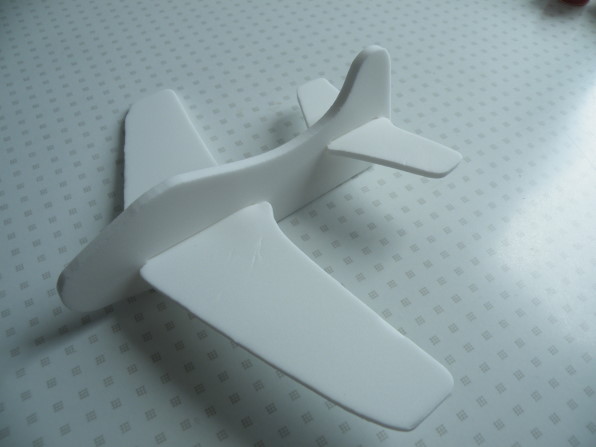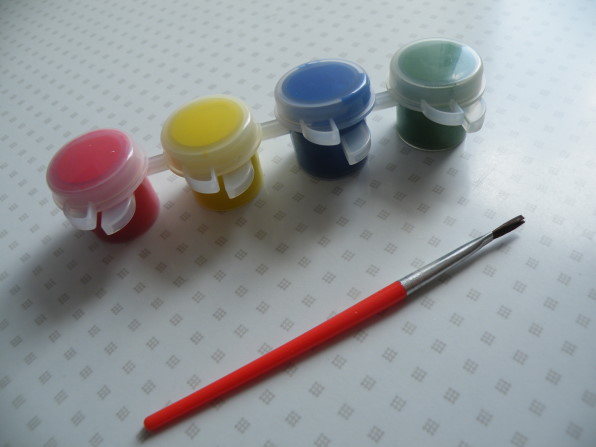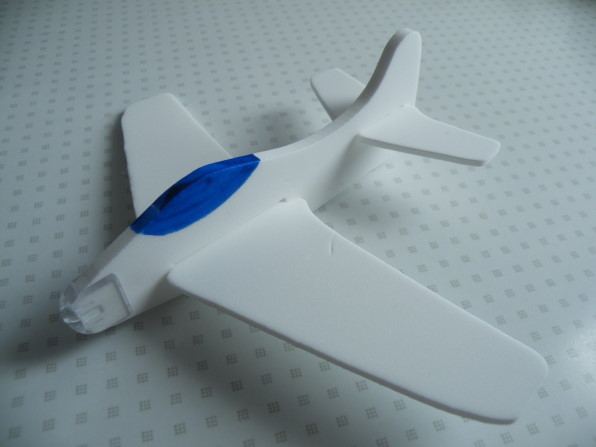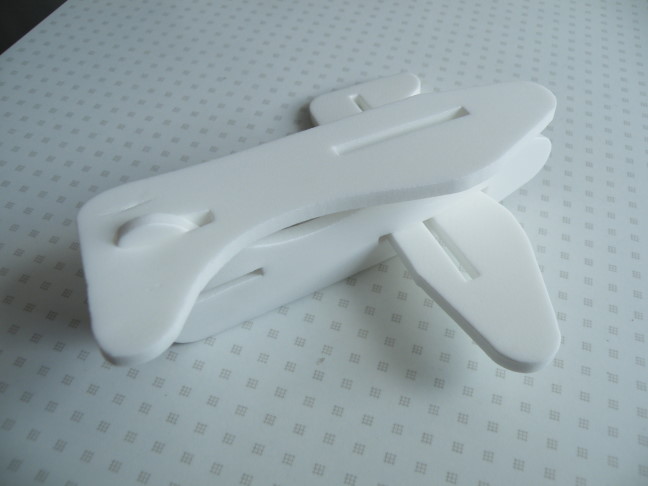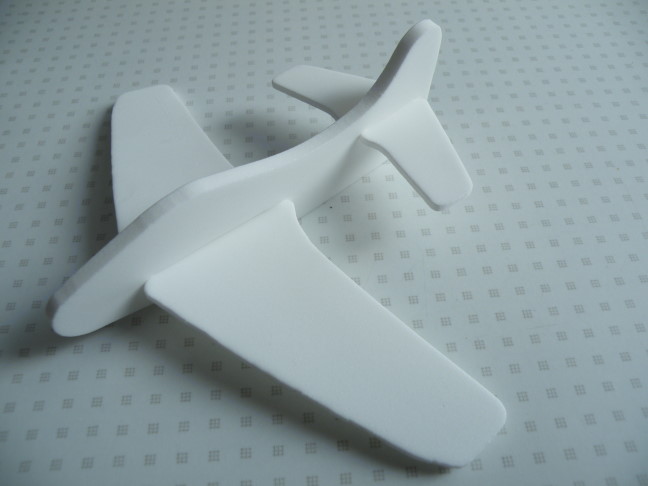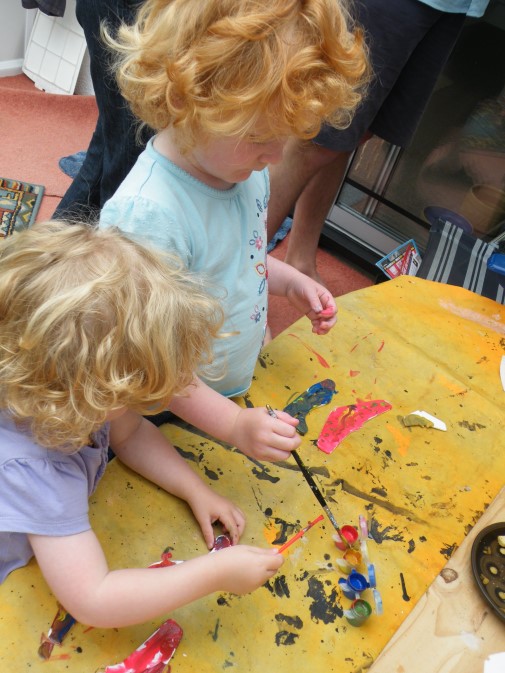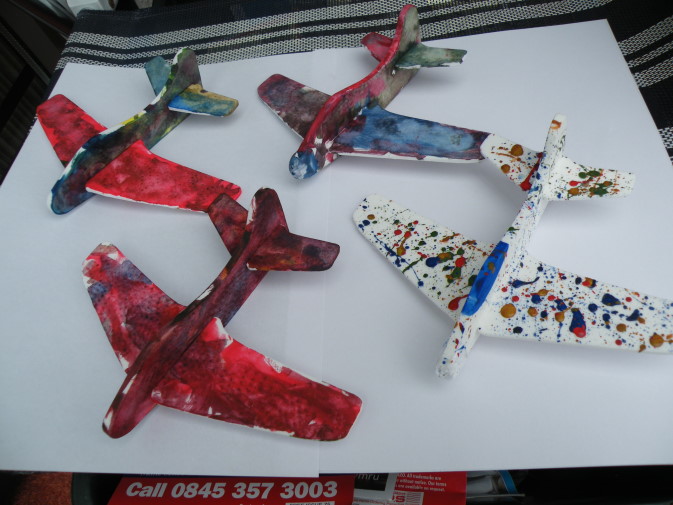|
|
|||||||||||||
|
Christchurch and District Model Flying Club |
|
Sainsbury’s foam aircraft kit set by the Editor
|
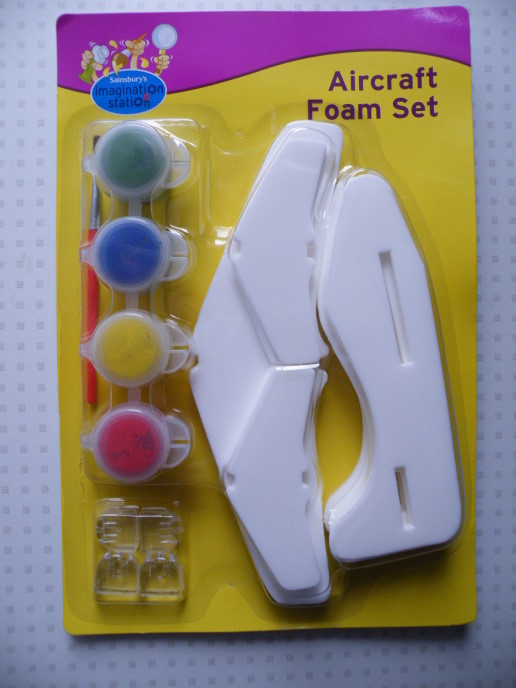 |
|
This kit is probably the best VFM model aircraft on the scene today, as for £3.99 you get 4 models, 4 pots of paint and a brush as well as the all-important nose-weights that will ensure stable flight. Opening the box is perhaps the trickiest part of the build and must be done very carefully to avoid damage to the components. This is the only task that should be done by a competent adult rather than an aeromodeller. It is very important to number the parts as they are taken from the box. This will avoid confusion later in the building process and prevent the building of a triplane or canard biplane rather than the monoplane that is intended. Remember that there are four sets of three parts per model. The lack of an instruction sheet need not deter inexperienced modellers from attempting the build. (See below for common faults in the building process) The parts of one plane laid out for inspection. A resemblance to the Saab Tunnan may be mere coincidence.
Painting may be done after assembly if you have very steady hands and good eyesight. Assembly is not difficult for anyone who has a couple of models under her belt. Male constructors may need assistance when sliding the wings into the fuselage slot, because the slot is too short for the component. This may lead to incorrect assembly. Note that the large wing goes at the front, and that the sweepback on the front wing should be mirrored by that of the tail and fin. If in doubt, the fin should be used as a guide.
The assembled model prior to painting
An excellent set of acrylic paints is included in the box, and just a little decoration will add character to the model.
The balance point is at 10% MAC and will give a very stable flight pattern and the potential for loops, rolls and spins. Technical data: Span 175 mm Length 136 mm Weight 2 grams Made from very soft Depron-type plastic foam: 3mm for the fuselage and 2mm for the wing and tailplane. Only available in white. Flight tests were carried out indoors on a calm sunny day, and were conducted in 2 parts: unmodified from the box and then trimmed for aerobatic flight. As supplied, the model glides fast and straight, with a glide angle af about 1:5. Despite hitting various obstructions, there was no damage to either model, furniture, dog or children. When trimmed for aerobatic flight, loops, stalls, wingovers and various other stunts could be performed, but were generally limited to one per throw, as the model has very little mass and limited energy at the end of each manouever. In conclusion, a very good VFM purchase which will find great favour with the grandchildren, when I’ve finished playing with it. |
|
|
|
||||||||||||||||||||||||||||||||||||||||||||||||
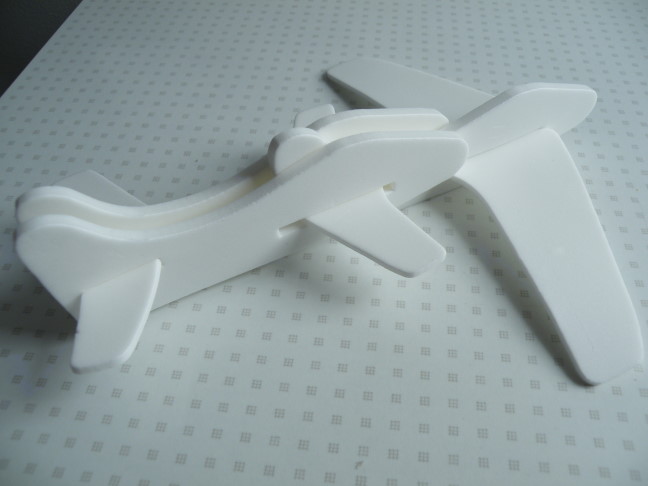 |
|
My favourite, and it will fly like this too! |
|
|
|
|
||||||||||||||||||||
|
[Home] [Chairman's Chatter] [Editorial] [Diary of a Flier] [3 Wheels] [Swift Kit] [Bubble Dancer] [Dummy Engines] [Kit Review 2] [Tailpiece] |
